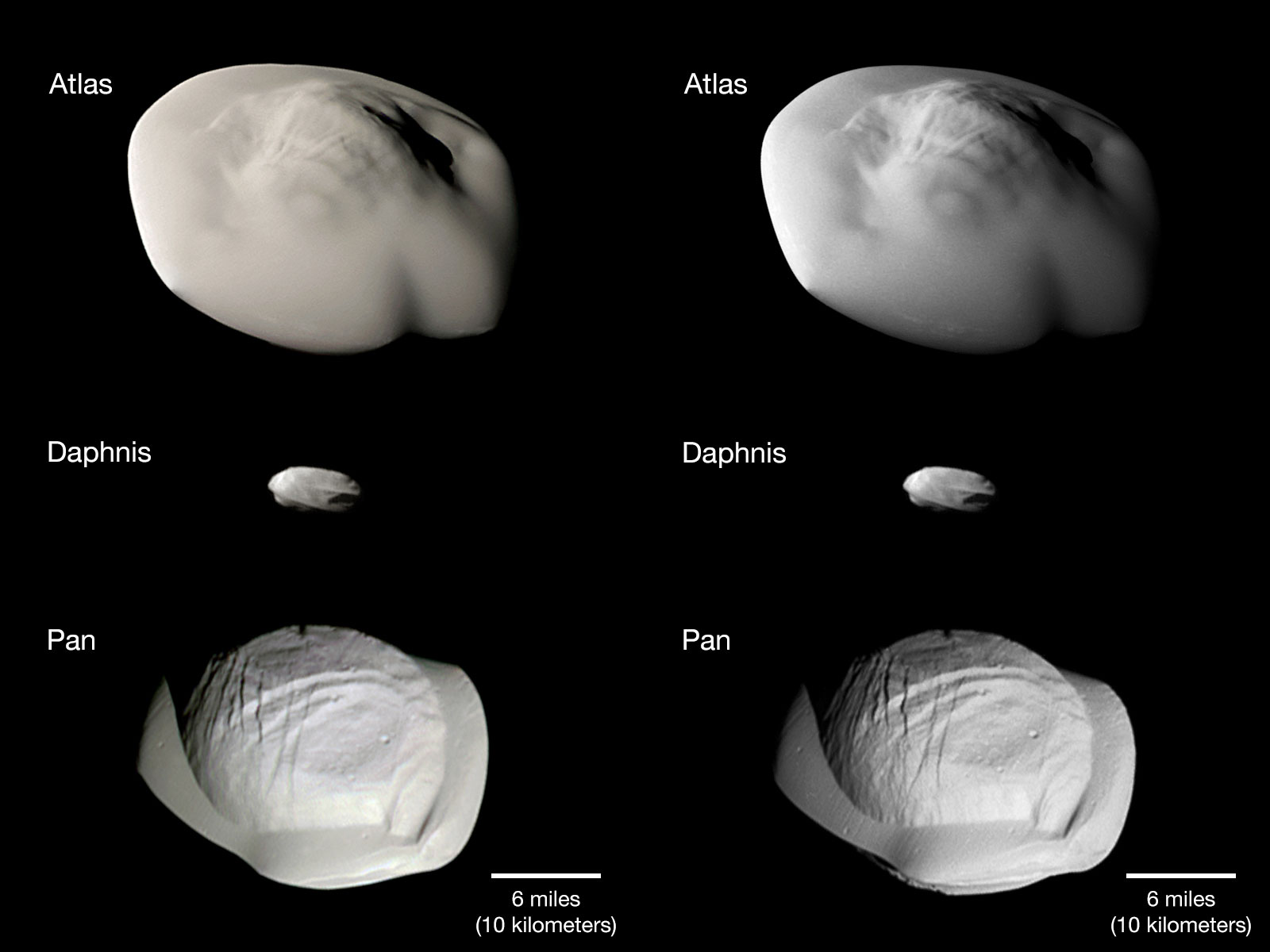
The imaging operations center is based at the Space Science Institute in Boulder, Colo.įor more information about the Cassini-Huygens mission visit. It has a distinctly lumpy, uneven appearance and a flat. The Cassini orbiter and its two onboard cameras were designed, developed and assembled at JPL. It’s only about 19 miles across, which is just a fraction of our own moon’s 2,159 mile diameter. The flyby had a close-approach distance of about 7,000 miles (11,000 kilometers). The Jet Propulsion Laboratory, a division of the California Institute of Technology in Pasadena, manages the mission for NASA's Science Mission Directorate, Washington, D.C. These raw, unprocessed images of Saturns moon, Atlas, were taken on April 12, 2017, by NASAs Cassini spacecraft. The Cassini-Huygens mission is a cooperative project of NASA, the European Space Agency and the Italian Space Agency. It is probably a shepherd satellite for Saturn's A-ring. This animation shows how Saturns moons Pan and Atlas grew by sweeping up particles from Saturns rings. Image scale is 5 miles (8 kilometers) per pixel. Atlas, a Moon of Saturn Saturn XV - 1980S28 Atlas, the second of Saturn's known satellites, orbits near the outer edge of the A-ring and is about 40 by 20 kilometers (25 by 15 miles) in size. The view was obtained at a distance of approximately 870,000 miles (1.4 million kilometers) from Atlas. The image was taken in visible light with the Cassini spacecraft narrow-angle camera on April 16, 2012. See Atlas and the F Ring and Saturn's Saucer Moons for other views of Atlas (19 miles, 30 kilometers across). The orbital period of Iapetus is the same as its rotational. At such a vast distance from Saturn, it takes Iapetus 79 days to complete one orbit.

The camera system on Cassini managed to capture the moon three times. Iapetus orbits Saturn at a fairly large distance, averaging at 2.2 million miles (3.5 million kilometres). Measuring 1062 kilometres in diameter, Tethys is the fifth largest of Saturns moons. This view looks toward the northern, sunlit side of the rings from just above the ringplane. Iapetus is the third largest moon of Saturn with a diameter of 913 miles (1,469 kilometres). The main rings are closer to the spacecraft than Atlas is, and the moon appears as only a small, white dot in the center of the image. The Cassini spacecraft looks past Saturn's main rings to spy the tiny moon Atlas, which orbits between the main rings and the thin F ring.


 0 kommentar(er)
0 kommentar(er)
